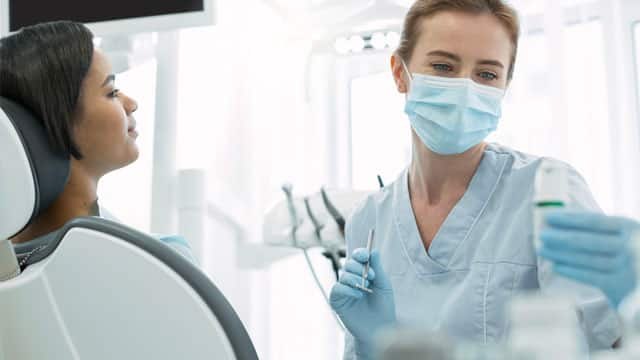How to Handle a Dental Emergency
In many ways, a dental emergency is similar to caring for any other injury. In general, you should take the following action in the event of trauma to the mouth or teeth:
- Check for bleeding
- Stop the bleeding by applying pressure
- Clean the wound with salt water or antiseptic rinse
- Assess the severity
- Take the injured child to your pediatrician or dentist as soon as possible
You can place an ice pack or cool compress on your child's face to keep down any swelling. Also, take some time to reassure your child that your dentist is well-trained to repair teeth and relieve discomfort.
Typically if your child has lost a baby tooth in the injury, they are not reattached. If your child has lost a permanent tooth, pick it up and be careful not to touch the root. According to MedlinePlus, you should gently place the tooth back in your child's mouth to maintain moisture and increase the chances that the dentist can successfully reattach it. To keep it in place, MedlinePlus suggests biting down gently on gauze or even a wet teabag.
If your child can't keep the tooth in their mouth, place it in a cup filled with a little bit of saliva or milk to keep the root moist. Even if the tooth looks damaged or broken, bring it along and let the dentist decide if it can be repaired.
Preparing a Dental First Aid Kit
A dental first aid kit is a great way to be prepared for emergency dental care for kids. It should contain many of the same items found in a standard first aid kit, along with oral care items to help deal with dental injuries. This kit can include:
- Gauze
- A small cup for mouthwash
- Mouthwash
- A cold compress
- A tooth storage container or sealed bottle with cap
Place the dental first aid kit near your regular first aid kit, in a place where it's quickly accessible.
Taking the Kids for an Emergency Visit
If your child experiences an injury to the face, it's a good idea to visit your child's dentist as soon as possible. Prompt attention from a medical professional can mean the difference between keeping or losing a tooth. Sometimes damaged teeth do not look damaged, so your child may require X-rays. If a tooth has been knocked out or removed, it's vital to see your dentist right away to prevent infection, control bleeding, check the bite, and determine if a mouth spacer needs to be placed by a dentist or orthodontist.
Quick, decisive action on your part can help ensure your child can recover without permanent damage to their teeth. Keep your emergency dental first aid kit nearby and prevent sports injuries with a mouthguard. With these tips and a first aid kit in hand, you can feel confident you can handle any dental emergency.
Oral Care Center articles are reviewed by an oral health medical professional. This information is for educational purposes only. This content is not intended to be a substitute for professional medical advice, diagnosis or treatment. Always seek the advice of your dentist, physician or other qualified healthcare provider.
ORAL HEALTH QUIZ
What's behind your smile?
Take our Oral Health assessment to get the most from your oral care routine
ORAL HEALTH QUIZ
What's behind your smile?
Take our Oral Health assessment to get the most from your oral care routine















